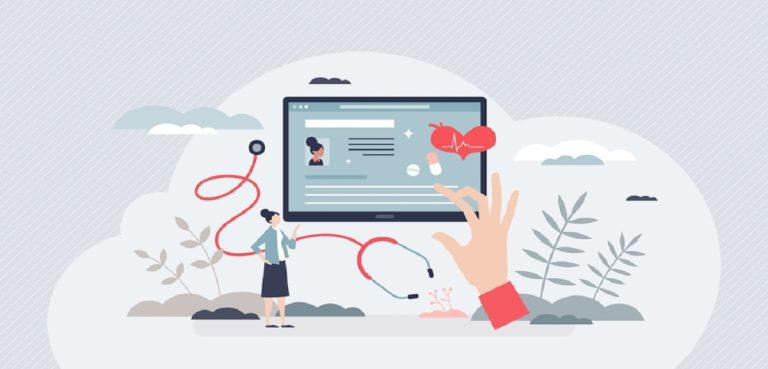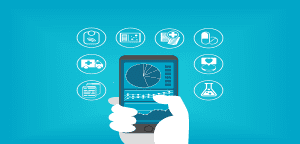The technology has seeped into every corner of the medical world, and for good reason. One of the most transformative innovations is Electronic Medical Health Records Software (EMR software). Not just a buzzword anymore, it has become an integral part of modern healthcare delivery in India.
Gone are the days of searching for misplaced files or flipping through stacks of papers to retrieve a patient’s medical history. EMR software is changing the game, improving the quality of patient care, increasing workflows, and helping healthcare professionals stay more connected and informed.
Let’s take a closer look at how electronic medical health records software is transforming healthcare and why adopting it is no longer optional, it’s essential.
What is Electronic Medical Health Records Software?
Before we delve deeper, it’s important to understand what we’re dealing with.
Electronic Medical Health Records Software, often abbreviated as EMR, is a digital version of a patient’s paper chart. It holds everything, from the patient’s medical history, diagnoses, medications, immunisation dates, allergies, radiology images, to lab test results.
In simple terms, it’s a centralised hub where all patient-related data is stored and can be accessed by authorised medical professionals, all at the click of a button.
How Does It Improve Patient Care?
1. Quick Access to Patient Information
Time is often a critical factor in healthcare. Whether it’s a medical emergency or a routine check-up, quick access to a patient’s records can make all the difference. EMR software enables doctors and nurses to view a patient’s complete medical history instantly, helping them make informed decisions faster.
2. Improved Accuracy and Reduced Errors
Manual records are prone to human error, illegible handwriting, misplaced files, or even forgotten allergies. EMR software drastically reduces these risks. With everything typed, stored, and automatically updated, the chance of prescribing the wrong medicine or overlooking critical information drops significantly.
3. Better Coordination Between Departments
In a hospital or clinic, several departments, such as pathology, radiology, and pharmacy, often need to work together. An integrated electronic medical health records software allows seamless communication and data sharing between departments, ensuring smooth and efficient patient care.
4. Increased Patient Engagement
Modern EMR systems often come with patient portals. Patients can log in, see their reports, understand their prescriptions, and even schedule appointments. This transparency builds trust and encourages patients to be more involved in their treatment journey.
5. Data-Driven Insights for Better Treatment
With digital records, it’s easier to analyse data over time. Doctors can track a patient’s progress, identify patterns, and even predict health issues before they become critical. This preventive approach is a big step forward in healthcare.
EMR Software in Indian Healthcare: Challenges & Opportunities
While developed countries have been using EMRs for years, India is still catching up. But the shift is happening and fast.
Challenges like cost, internet accessibility, and resistance to change do exist. However, with affordable cloud-based solutions, MargBooks, even small clinics and medical practitioners are beginning to embrace digitisation.
MargBooks offers a complete suite for managing not only patient records but also pharmacy stock, billing, appointments, and more. It’s user-friendly, cloud-based, and tailored for the Indian market, making it easier for even non-tech-savvy users to make the switch.
The Role of Pharma Distribution and Medical Store Software
You may wonder how pharma distribution software and medical store software connect with EMR systems. In reality, they all form part of a unified healthcare ecosystem.
Here’s how:
- Pharma Distribution Software helps manage the flow of medicines from manufacturers to pharmacies. When integrated with EMR, it ensures that the prescribed medicines are available in real-time, avoiding delays.
- Medical Store Software is used by pharmacies to manage sales, stock, billing, and GST. If connected with EMR systems, it can automatically record dispensed medications in the patient’s history, reducing the chances of duplicate or conflicting prescriptions.
Using a solution, MargBooks, which combines EMR features with pharma distribution software and medical store software, ensures seamless connectivity between doctors, pharmacists, and distributors. The result? Smoother operations and better patient care.
Key Benefits of Integrating MargBooks in Healthcare Setup
- Easy-to-use interface for clinics, hospitals, and pharmacies
- Secure cloud storage of patient data with regular backups
- Automated reminders for follow-ups and prescriptions
- Integration of billing, stock management, and compliance (GST)
- Accessible from anywhere, perfect for telemedicine and remote clinics
Final Thoughts
The future of healthcare in India lies in digitisation. Electronic medical health records software is not just a trend. It’s the foundation of a smarter, safer, and more efficient healthcare system. Whether you’re a solo practitioner, a mid-size hospital, or a pharmacy, integrating your services with solutions, MargBooks, can drastically elevate the level of care you provide.
With rising patient expectations and the growing demand for accuracy, speed, and transparency, investing in the right technology is not just good practice, it’s a responsibility.




